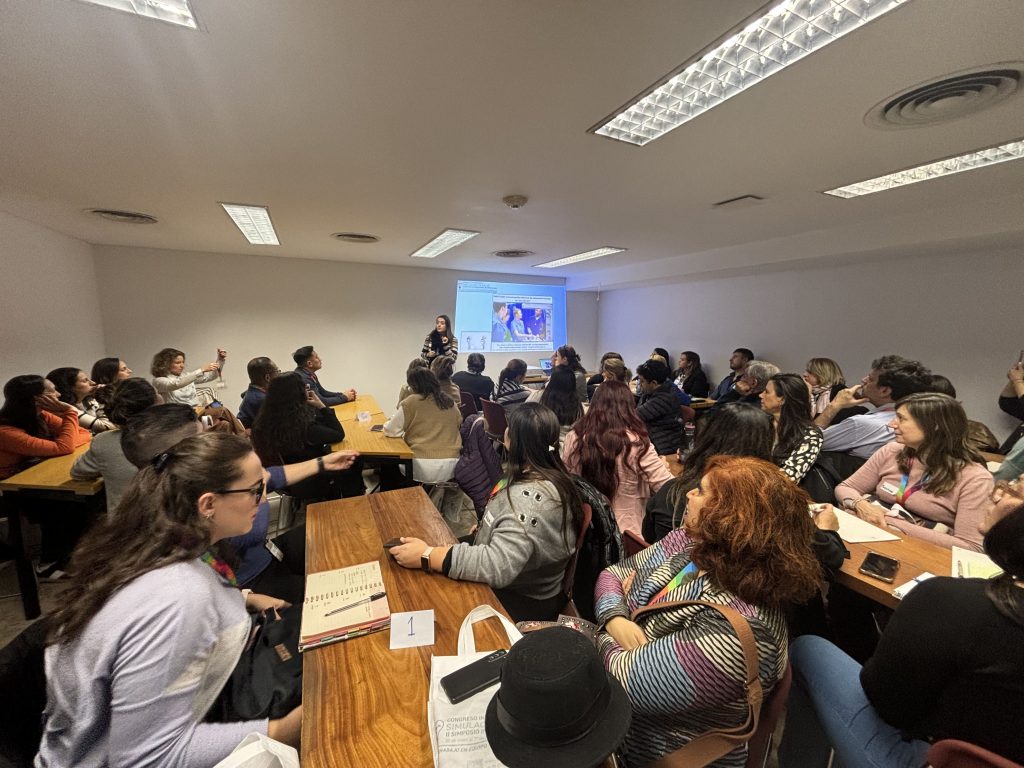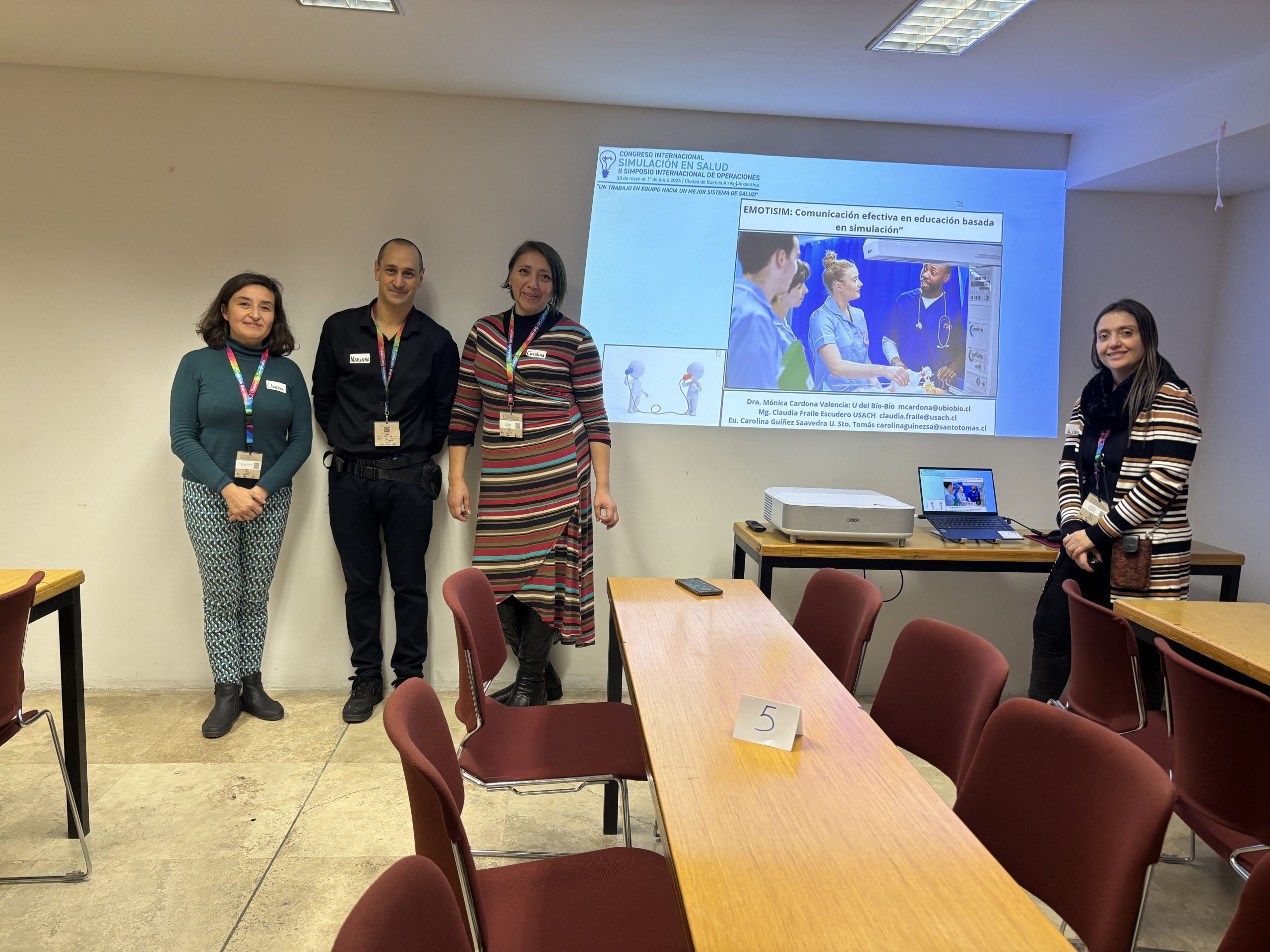Emotional intelligence is crucial for improving communication, managing conflict, and fostering productive relationships in work and training environments. The authors present the “EmotiSim” workshop, which explores how educational simulation can reinforce these emotional competencies, helping professionals to recognize, express and manage emotions effectively. Through practical and theoretical activities, participants develop essential skills to address emotional challenges, improve patient safety and increase confidence in decision making.
The importance of emotional intelligence
Emotional intelligence (EI) has emerged as a fundamental competency in work and educational environments. The ability to identify, express and manage emotions not only improves communication, but also facilitates conflict resolution and fosters healthier and more productive relationships. According to Bisquerra (2003), emotion is a complex state of the organism characterized by an excitation or disturbance that predisposes to an organized response. Emotions are generated in response to an external or internal event. Faced with an external event, the individual internalizes it according to his experience and emotional skills, he does it from the biological or physical (corporal) point of view, a certain behavior or reaction is generated in front of this stimulus, then it is made conscious or analyzed from the intellectual point of view to give it meaning and generate a reaction to face the initial stimulus.
Definitions of emotion and impact of emotional intelligence on health
Casassus defines emotions as, “A flow of embodied energy that is relational in nature and contains information” (2015), It is considered a response to situations important to the individual or a personal experience that is also described as a disposition to action, to make decisions in the face of a given stimulus. Emotion is an energy that relates external situations with the experiences that an individual brings, it is where psychological and biological experience converge.
A health professional with adequate communication skills and EI development reduces the number of demands received, the degree of patient adherence to prescribed treatments and the degree of satisfaction with the care received is higher; it is estimated that communication failures are important in 70% of adverse events in patient safety (Birks 2007; Rabol et al., 2011).

The EmotiSim workshop: a transformative experience
To link emotion with communication and patient safety, a workshop was planned and executed to 42 healthcare and related professionals from the simulation world, through which we explored how simulation-based education can strengthen these stated skills with the following objectives in mind:
- Identify emotions expressed by others in simulated situations, through practical exercises and audiovisual resources, for participants to develop emotional insight.
- To demonstrate improved skills in emotional expression and non-verbal communication during the simulations, through activities designed to consider paraverbal aspects in order for participants to convey their emotions more effectively.
- Develop confidence and competence in managing emotional conflicts in simulated scenarios, applying the skills learned in simulated situations to manage emotional conflicts effectively, with direct applications in work and educational environments.
Practical Exercises, Resources and Workshop Outcomes
The “EmotiSim” workshop was structured in three key segments: (1) a theoretical introduction, (2) a practical development, (3) a closing with reflections and conclusions. Each segment was designed to maximize learning and practical application of emotional skills.
The session began with an icebreaker activity to foster a collaborative environment, then a brief presentation was given covering the basic concepts of communication taking into account Jakobson’s model (1948) and emotional intelligence, following Mayer and Salovey’s model (1997). This model breaks down EI into four main areas:
- Emotion perception and appraisal: the ability to perceive and express emotions accurately.
- Emotional facilitation of thinking: using emotions to facilitate thinking and decision making.
- Emotional understanding and analysis: understanding emotions and emotional awareness.
- Emotional regulation: managing emotions to promote personal and intellectual growth.
The importance of these concepts is discussed in the context of simulation-based education, highlighting their relevance for effective communication in professional and educational settings.
The core of the workshop consisted of executing practical activities designed to identify and classify emotions in simulated situations. For this purpose, the Trait Meta-Mood Scale (TMMS 24) developed by Salovey et al. (1995) and adapted to Spanish by Fernández-Berrocal, Extremera & Ramos (2004) was applied. This instrument evaluates the belief or perception that each person has about the ability to attend to, understand or regulate his or her own emotional states; it is a measure of the level of EI perceived in its intrapersonal dimension. It consists of 24 items presented in a 5-point Likert-type format (1 = strongly disagree, 5 = strongly agree) and distributed in three sub-factors (8 items per factor):
a. Emotional attention: degree to which each subject thinks about his/her feelings.
b. Emotional clarity: ability to understand one’s own mood states.
c. Emotional regulation or repair: ability to repair negative emotional states and maintain positive ones.
On the other hand, audiovisual resources were used, where participants observed and analyzed scenes of health experiences, in order to identify the emotions expressed. This process of observation and reflection helped them to improve their accuracy in emotional self-recognition.
One of the activities highlighted was the use of observation and situational analysis exercises. Participants worked in small groups to discuss and reflect on the emotions observed in different scenarios. These activities not only improve emotional perception, but also help to foster teamwork and effective communication skills, reinforcing the concepts of health communication and its importance in contributing to the safety of clinical care.
The workshop concludes with a recapitulation of the concepts and skills acquired. The brainstorming modality is used through mentimeter, allowing participants to reflect on their learning and provide feedback. In this last part, the importance of applying the emotional skills learned in work and educational environments is emphasized. Attendees at the end shared their experiences and discussed how they will implement these skills in their respective professional areas.

Reflections and conclusions on emotional intelligence in simulation
As facilitators of “EmotiSim”, we observed the positive impact that emotional intelligence can have on simulation-based education. Watching participants improve their ability to recognize and manage emotions, and apply these skills in simulated scenarios, is a rewarding experience. It also highlights the importance of effective communication to ensure patient safety.
One of the greatest rewards of this workshop is the transformation that participants experience. They arrive with a basic understanding of emotional intelligence, but leave with practical and applicable skills that they can use in their daily and professional lives. The combination of theory and practice in a safe and controlled environment allows attendees to experiment and learn effectively.
The “EmotiSim” workshop is a valuable tool for anyone wishing to improve their emotional intelligence and communication skills. Through the identification, expression and management of emotions in simulated situations, participants develop competencies that are crucial in today’s world. Whether in a work, educational or personal environment.
In a world where emotional intelligence is increasingly valued, workshops like this one are essential to prepare people for the emotional challenges they will face.
Simulation-based education not only teaches skills, but also inspires confidence and competence,
providing the tools necessary to manage conflict and communicate effectively.
References:
- Bisquerra Alzina Rafael (2003) Educación emocional y competencias básicas para la vida. Revista de Investigación Educativa, 21(1) 7-43
- Birks YF, Watt IS. Emotional intelligence and patient-centred care. Journal of the Royal Society of Medicine. 2007;100(8):368-374. doi:10.1177/014107680710000813
- Casassus Juan (2015) La educación del ser emocional. Editorial cuarto propio.
- Rabol LI, Andersen ML, Ostergaard D, Bjorn B, Lilja B, Mogensen T. Descriptions of verbal communication errors between staff. An analysis of 84 root cause analysis-reports from Danish hospitals. BMJ Qual Saf. 2011 Mar;20(3):268-74. doi: 10.1136/bmjqs.2010.040238. Epub 2011 Jan 5. PMID: 21209139.
- Extremera, N., Fernández Berrocal, P., & Mestre, J.M. (2004). Medidas de evaluación de la Inteligencia Emocional. Revista Latinoamericana de Psicología, 36, 209- 228.
- Fernández-Berrocal, P., Extremera,N.yRamos,N.(2004) Validity and reliability of the Spanish modified version of the Trait Meta-Mood Scale, Psychological Reports,94,751-755.
READ ALSO









































